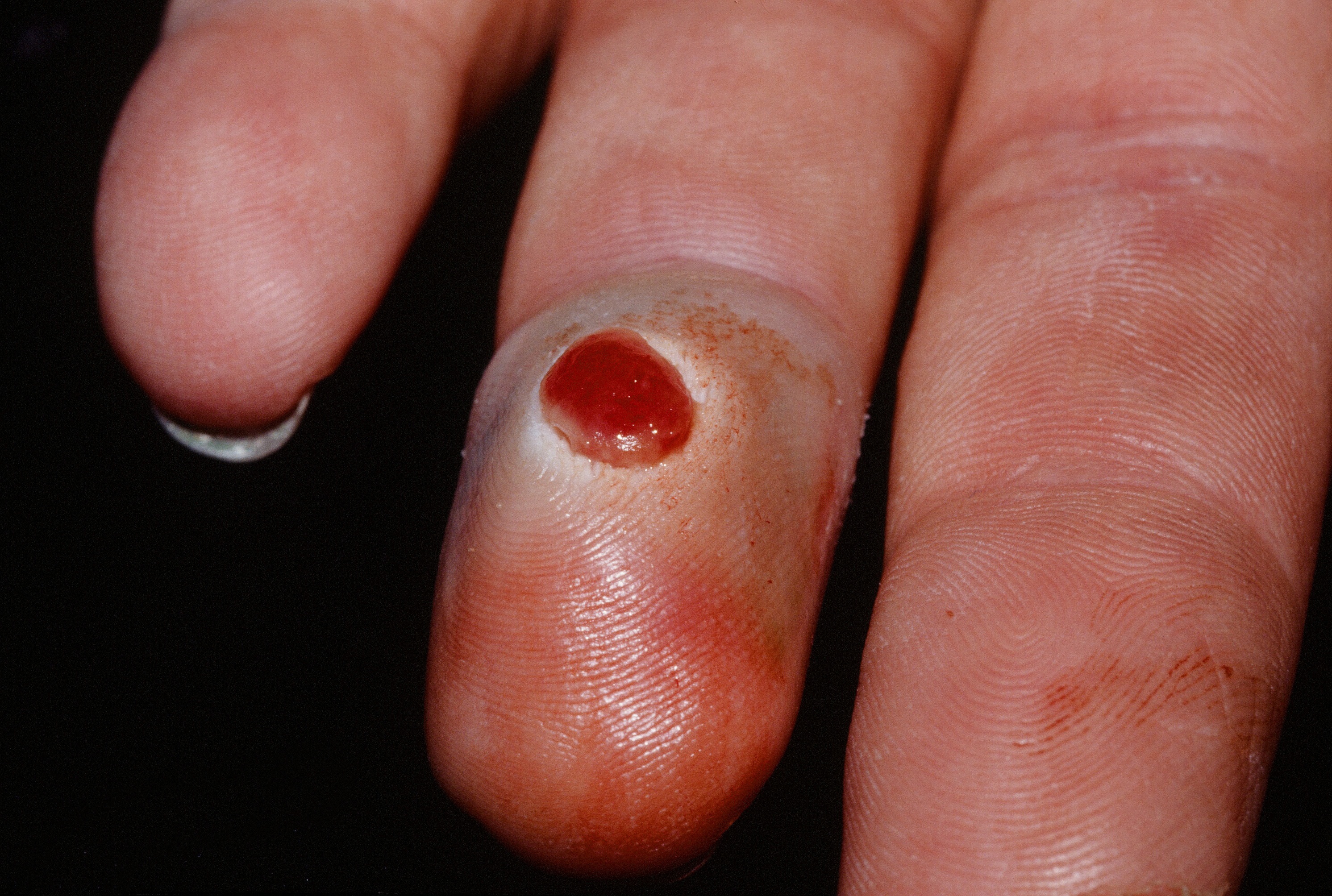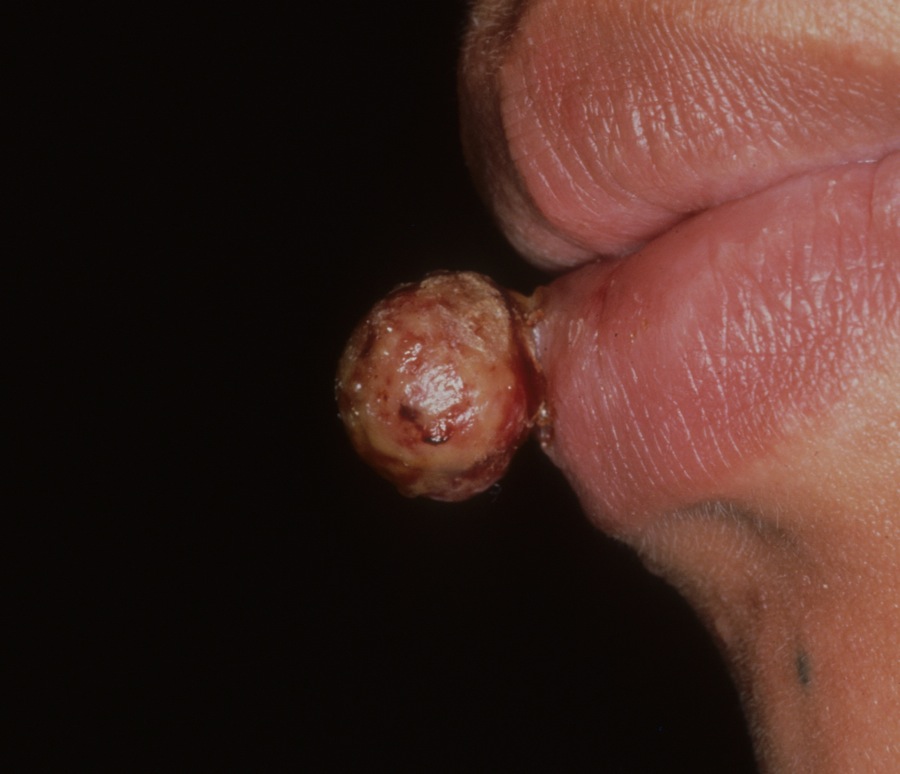
PYOGENIC GRANULOMA
A Pyogenic Granuloma (PG) is a vascular growth common in both children and pregnant women. It seems to represent a reactive and hyperplastic condition, rather than a neoplasm. It usually develops at the site of skin injury and frequently bleeds.
- The name is a misnomer. The lesion is not infectious and histopathologic study does not show a granuloma.
- The PG is a reactive vascular lesion.
- HPV DNA was detected in 44.4% (eight of 18) of the samples in one study, suggesting a potential link [Int J Dermatol. 2015 Oct 22].
- Predisposing factors: pregnancy, isotretinoin, port wine stains and BRAF inhibitors.
The sudden appearance of a vascular, friable papule that bleeds easily on the finger, palm, sole, head, or neck is characteristic of a pyogenic granuloma. It is more common in pregnancy and in those patients on isotretinoin, especially in the periungual areas. Topical retinoid use has also induced PG. It may rarely occur after cryosurgery. It may occur in the periungual area, especially in the setting of retinoid or indinavir administration. It is GLUT-1 negative. The "bandage sign" is the frequent observation of patients presenting with bandages covering the lesion, as they bleed easily and are often covered to prevent trauma and bleeding.

RegionalDerm
Homepage | Who is Dr. White? | Privacy Policy | FAQs | Use of Images | Contact Dr. White
It is not the intention of RegionalDerm.com to provide specific medical advice, diagnosis or treatment. RegionalDerm.com only intends to provide users with information regarding various medical conditions for educational purposes and will not provide specific medical advice. Information on RegionalDerm.com is not intended as a substitute for seeking medical treatment and you should always seek the advice of a qualified healthcare provider for diagnosis and for answers to your individual questions. Information contained on RegionalDerm.com should never cause you to disregard professional medical advice or delay seeking treatment. If you live in the United States and believe you are having a medical emergency call 911 immediately.
